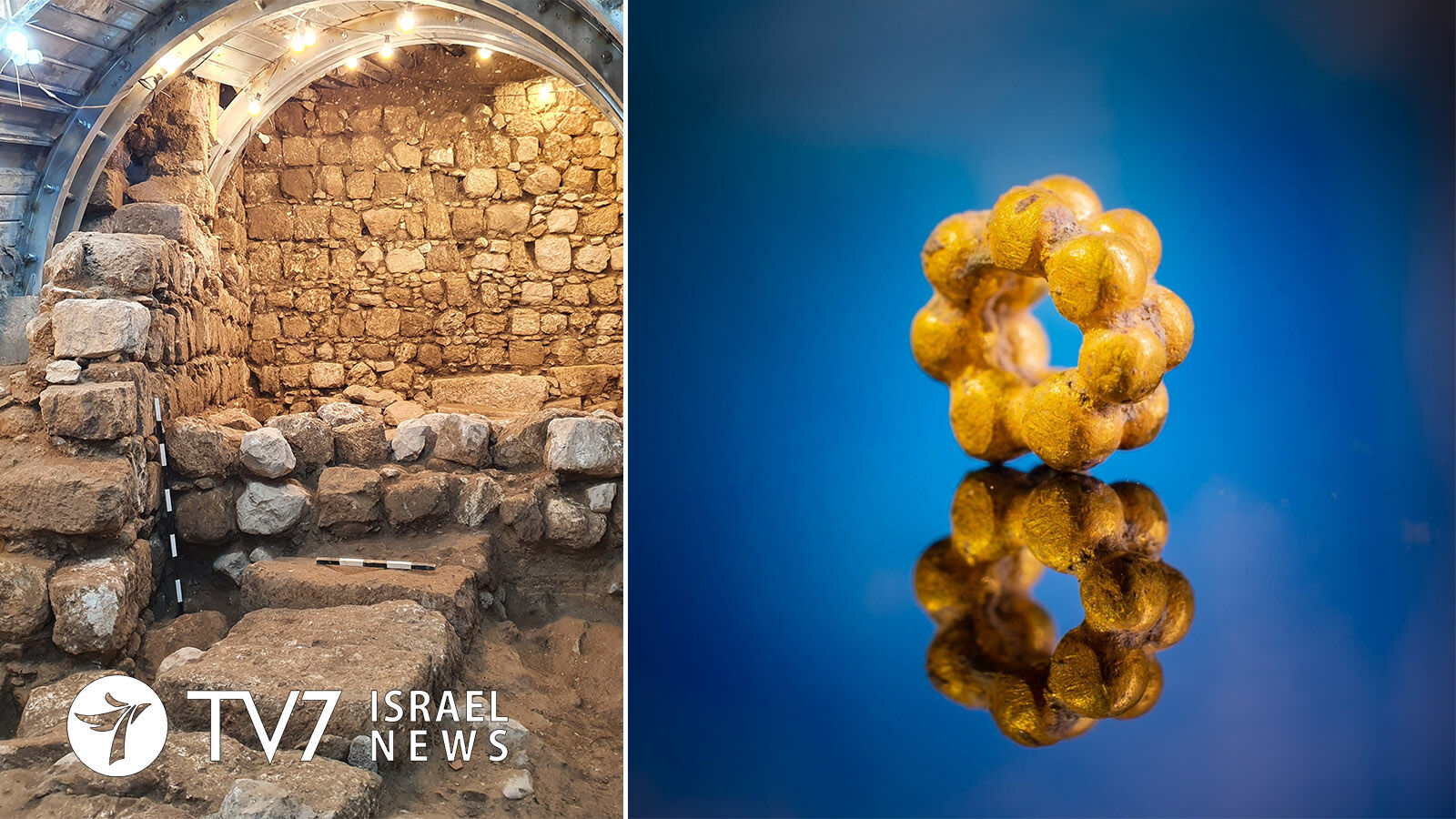The rare artifact dates back to at least 1,600 years.
By Erin Viner
The spectacular item from the Roman-era is made of pure gold.
It was discovered by 18-year-old Hallel Feidman of Bnei Ayish, who is a National Service volunteer at the sifting project at the Archaeological Experience in the Emek Tzurim National Park in the City of David as part of the Pilgrimage Road Excavation.
“I poured the pail onto the sieve and began to wash the material that was brought from the excavations in the City of David, ” Feidman said, describing the moment she found the shining bead, according to a statement from the Israel Antiquities Authority (IAA). “Everyone here was very excited,” she added.
While similar beads have been discovered in burial caves from 2500 years ago (at the end of the First Temple period) in Ketef Hinnom near the area during previous digs carried out by Professor Gabriel Barkay, they were made of silver. To this day, only a few dozen gold beads have been found in Israel.
“Throughout all my years in archaeology, I have found gold perhaps once or twice, so to find gold jewelry is something very, very special,” said Dr. Amir Golani, an ancient jewelry expert at the IAA.
An expert technique demonstrating delicate workmanship was required by the jeweler to affix tens of tiny balls together in the shape of a ring in order to create one small bead.
“Only a professional craftsman could produce such a bead, which is another reason that this find holds great value,” Dr. Golani observed, undercoring that its “complex production” required not only a good understanding of the materials and their properties, but also control of heat to expertly solder the tiny balls together to create a tiny ring without melting all of the gold.
“Whoever could afford a piece like this made from gold, was an affluent person, with means,” he emphasized, while explaining that the perfectly preserved bead likely belonged to a necklace or bracelet.
The stunning relic is especially significant due to the lack of gold items uncovered in archaeological excavations, as well as its intricate design that is believed to originate in Mesopotamia about 4,500 years ago.
It may have been dropped in the City of David during extensive trade relations between Jerusalem and other regions at that time or was possibly presented as a gift to a lucky onetime resident. It could also been passed down from one generation to another family member as an inheritance.
Shlomo Greenberg and Ari Levy, Excavation Directors on behalf of the IAA, said the rare treasure was located in what was once a 25-meter long grandiose structure, where a decorated mosaic floor and imported clay vessels were further evidence of the residents wealth.
IAA Director Eli Escusido commented that, “although it is a tiny find, it is precisely the personal, day-to-day items that manage to touch and connect us more than anything else, directly, to a certain person. Even with today’s advanced technology creating something like this would be very complex. A close examination of this object fills one with a deep sense of admiration for the technical skill and ability of those who came before us many centuries ago. ”
The Emek Tzurim National Park is open all year long, with numerous discoveries over the years reveal different periods of Jerusalem’s history, including are coins and pottery fragments.
